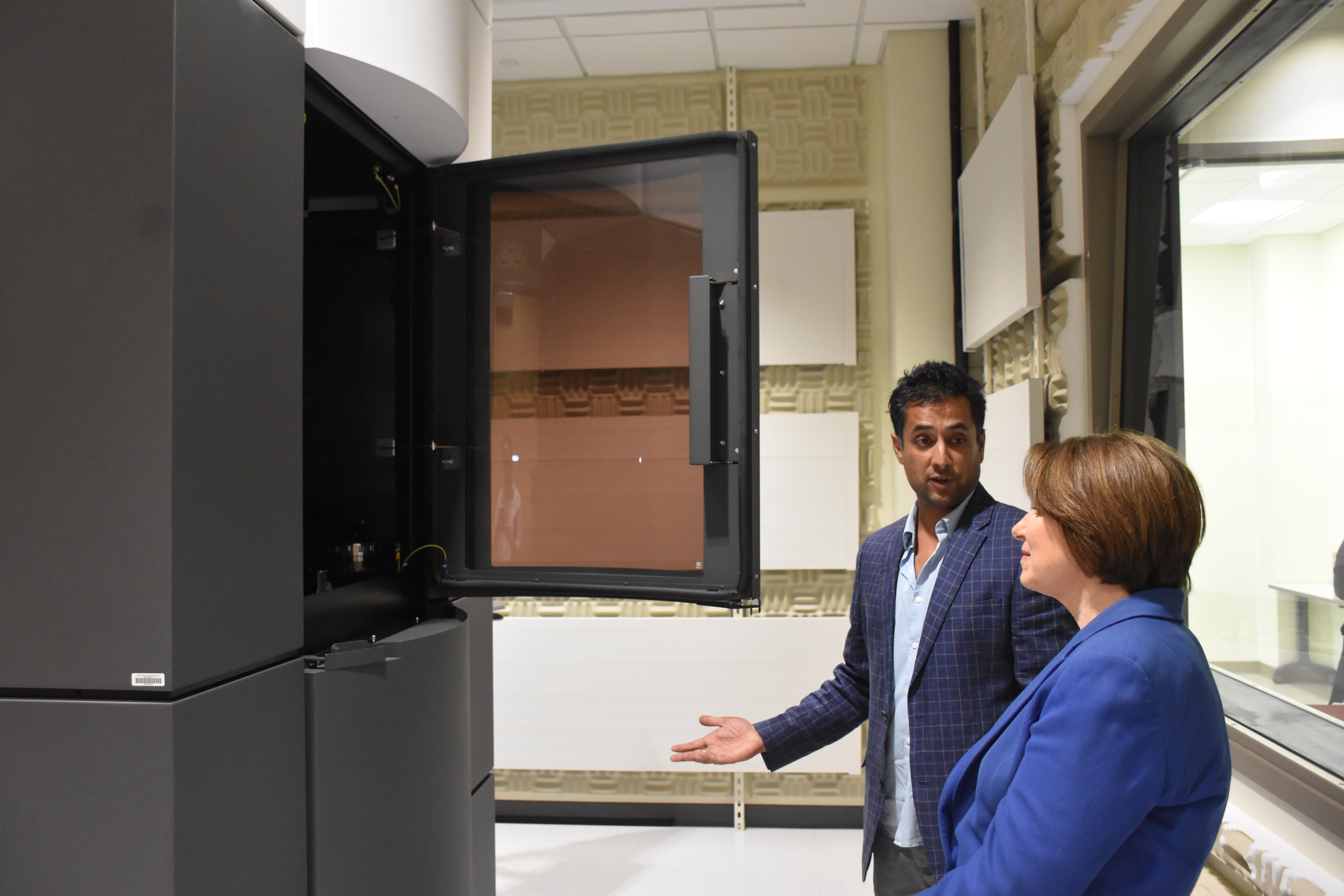Contractors looking for new projects
Published 8:22 am Tuesday, August 24, 2010

Chris Ayers of Southwest Detention checks the towel hangers for give in a jail cell at the Jail and Justice Center Thursday morning. --Eric Johnson/photodesk@austindailyherald.com
Mower County’s new jail and justice center has sparked plenty of controversy, but there’s one group that was largely happy to see a large building project in the county: construction contractors.
“For us, it was welcome,” said M. Patrick Harty, president of Harty Mechanical Inc.
Harty Mechanical, based in Austin, had about 10 employees working on the project for more than a year. The company dealt with all the geothermal work, along with the plumbing and piping on the inside of the jail.
“It allowed us to keep a good sized crew and keep them in town,” Harty said. “Where most of the time in the last couple years, we’re predominantly traveling 40, 60, 100 miles one way each day.”
A project in town tends to be beneficial to the community, Harty said.
“We had the work in town, so the money stayed in town,” he said.
Without the jail and justice center project, Harty said he would have likely had to layoff workers.
“We were glad it was done,” Harty said. “I know a lot of people weren’t happy about it being built, but for the local economy it was a real boost.”
Large construction projects, like the $30 million jail and justice center project, are often hard to come by these days.
“It’s been a rough couple years,” said John Pristash, project manager with Knutson Construction Services. “There’s definitely no comfort level like there used to be that there’s a project around the corner.”
Knutson Construction has been the manager of the project since the project started. At construction’s peak, Pristash said there were as many as 90 contract workers on site. As the construction manager, Knutson oversees the projects and manages the sub contractors. About 30 contractors worked on the project, according to Pristash.
Major construction on the project is complete, and work is now limited to “punch-list items,” which look to correct defects, and testing and inspections.
As the end of the project nears, Pristash said there are mixed emotions.
“You always have that good feeling of turning the project over to the client,” he said.
However, the question is whether or not there’s a next project to start work on.
“It’s slowed way down, and I think everybody that is working feels fortunate that they are working,” Pristash said.
While there are fewer projects, there are also more companies bidding for work on a project. Harty said the number of bidders on a project is a good indicator of the economy.
“In good times, there would maybe be half a dozen bidders on a project like this,” Harty said. “And in bad times there’s probably three times that many, and they come from at least one state away and 100, 200 miles is nothing.”
“There was a lot of competition on this project,” he added.
However, that can be beneficial to owners.
“From an owner’s perspective, these buildings are going that much cheaper — 20 to 30 percent often times,” he said. “So it’s a good time for owners to build.”
With fewer projects available, contractors like Knutson are expanding the area they serve. Some large projects are beginning to attract bidders from national contracting firms, according to Pristash.
Harty said the economy for construction contractors is really struggling because the private industry is hesitant to make investments in large building projects in an unsure economy.
“In the immediate area, the work is down,” Harty said. “The work that’s out there is some form of government work. … There’s a limited amount of private investment in new construction.”
Harty said it would take a year or more before that market turns around. The builders exchange may be a strong indicator of when the economy begins to pick up for contractors. In a stable time, Harty said there would be two to three projects his company is interested in a week, and there could be four to five projects in a week. However, he said there are only a few projects a month in the current climate.
“There’s just not that many projects that are out there, ready to go,” he said. “There’s a lot of talk, and there’s a lot of planning. It just isn’t turning into real, bonafide projects.”
However, he noted about half his employees travel during strong economic times.
“Even when the economy is good, not each area is growing,” Harty said. “Rochester is an anchor in this area. Austin has held its own, but a company like us would not be able to keep our employees busy in Austin.”
Since the company’s work on the jail and justice center finished, Harty Mechanical has shifted it’s work to a twin ice rink at the Burnsville Ice Center.
“In order to keep our employees fully employed … you have to keep spreading out, so your circle grows farther,” Harty said.
Along with projects in the Twin Cities, Harty Mechanical has done projects in Fargo, and they’ve even traveled as far as Massachusetts.
One reason the company tends to travel is because Harty Mechanical specializes in geothermal work, and they’ll travel where such services are needed.
Knutson will soon shift work to another justice center project in Houston County. Pristash said Knutson plans to be done with Mower County’s jail and justice center in time for offices to start moving in early September.


